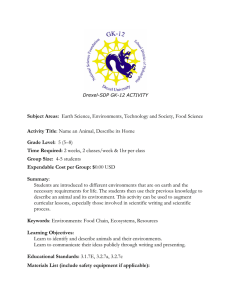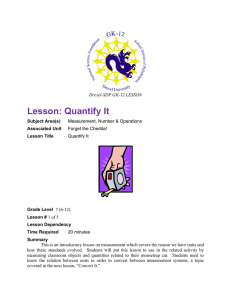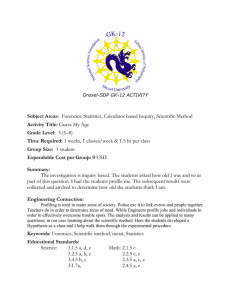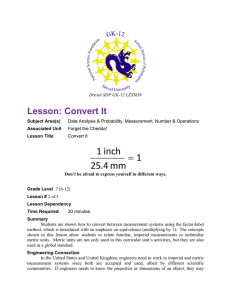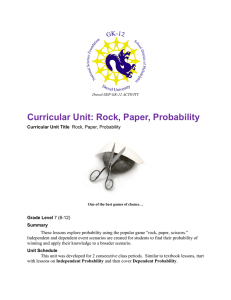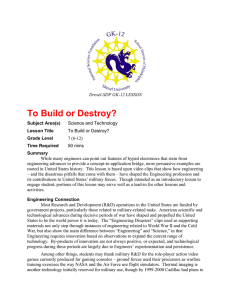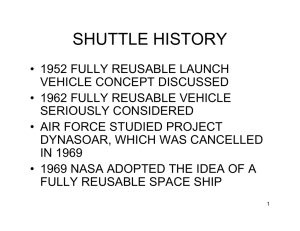Activity: Convert It
advertisement
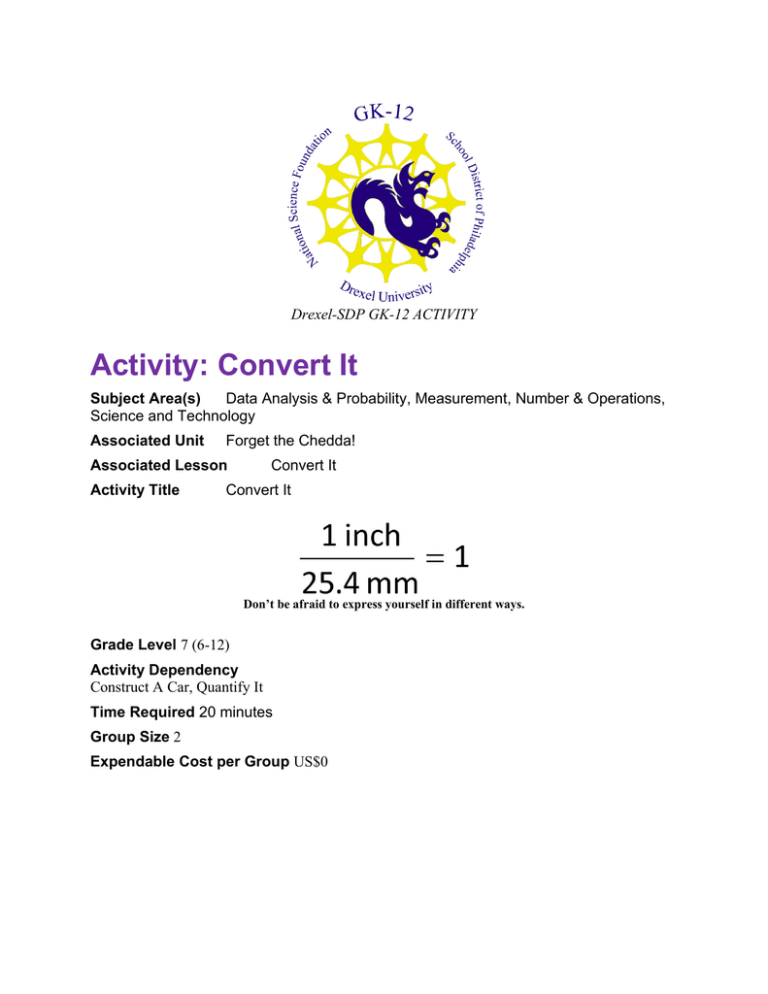
Drexel-SDP GK-12 ACTIVITY Activity: Convert It Subject Area(s) Data Analysis & Probability, Measurement, Number & Operations, Science and Technology Associated Unit Forget the Chedda! Associated Lesson Activity Title Convert It Convert It Don’t be afraid to express yourself in different ways. Grade Level 7 (6-12) Activity Dependency Construct A Car, Quantify It Time Required 20 minutes Group Size 2 Expendable Cost per Group US$0 Summary Students are encouraged to convert the measurements they recorded in “Quantify It” to a different measurement system in order to relate the imperial and metric systems and practice the operations necessary to convert a measurement. Engineering Connection When analyzing a model, Mechanical Engineers draw diagrams to illustrate and understand the loads that cause motion or deformation. Sometimes a diagram that shows forces and dimensions of component parts is sufficient to calculate a solution, but computer simulations may be used in the case of complex models. These complex models must be accurately described and loaded into the simulation as a drafted diagram, which can be scanned by hightech laser techniques or designed using low-tech computer-aided drafting (CAD) software with measurements assessed using a micrometer or vernier caliper. Keywords measure, classroom object, car, distance, force, English unit, metric unit, SI unit, MKS, convert, factor-label Educational Standards • PA Science: o 3.1.7 – Unifying themes • PA Math: o 2.1.8.D – Apply ratio and proportion to mathematical problem situations involving distance, rate, time, and similar triangles o 2.2.8.A – Complete calculations by applying the order of operations o 2.3.5.D – Convert linear measurements within the same system o 2.3.8.A – Develop formulas and procedures for determining measurements o 2.4.5.B – Use models, number facts, properties, and relationships to check and verify predictions and explain reasoning Pre-Requisite Knowledge Knowledge of unit lengths and awareness of measurement systems Learning Objectives After this activity, students should be able to: • Set up a factor-label line calculation • Compute a multi-step conversion (multiplying and dividing correctly) • Relate combinations of macro-units distance, mass, and time. Materials List Each group needs: • “Convert It” worksheet • Calculator using conversions of Introduction / Motivation [Continue from Convert It Lesson] All units can be composed of three quantities: distance, mass, and time. In the example mentioned earlier, the Mars orbiter didn’t have its software written in the same measurement system as its sensors. As a result, it detected that a landing surface was farther than it actually was, causing the orbiter to smash into the ground because it hadn’t slowed to an appropriate speed. What other quantities, besides position, might be affected by the same software glitch? (Velocity, acceleration, force). Why? (These units depend on the unit of distance). Convert the quantities you estimated and measured in the previous activity. After completing these, you can try to compute the conversion factor for Newtons to pounds or Pascals to PSI (pounds per square inch) based on unit analysis. Procedure Background The associated worksheet is meant as a guide for converting distances and can be modified accordingly. Before the Activity • Distribute “Convert It” worksheets • Distribute calculators With the Students 1. Check students’ progress and offer assistance or additional explanation Attachments chedda_3_activity_convert_it_worksheet.pdf Owner Drexel University GK-12 Program Contributors John C. Fitzpatrick, Mechanical Engineering and Mechanics, Drexel University Copyright Copyright 2008 Drexel University GK-12 Program. Reproduction permission is granted for nonprofit educational use.
